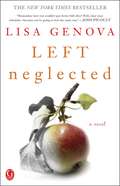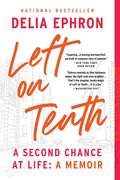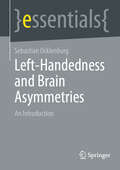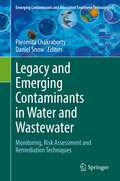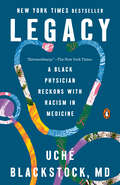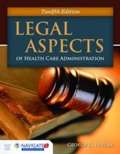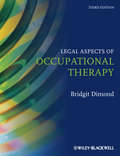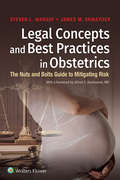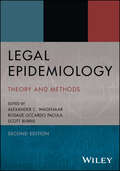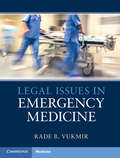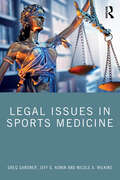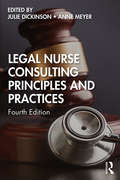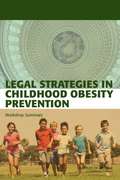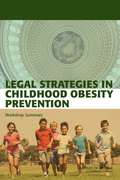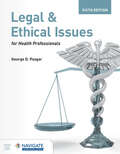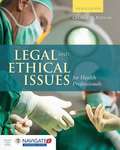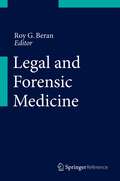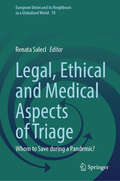- Table View
- List View
Left Neglected
by Lisa GenovaIn Lisa Genova’s New York Times bestselling novel—and Academy Award–winning film—of resilience in the face of a devastating diagnosis, a vibrant mother in her thirties learns what matters most in life when a car crash leaves her with a traumatic brain disorder called “left neglect.”Sarah Nickerson, like any other working mom, is busy trying to have it all. One morning while racing to work and distracted by her cell phone, she looks away from the road for one second too long. In that blink of an eye, all the rapidly moving parts of her over-scheduled life come to a screeching halt. After a brain injury steals her awareness of everything on her left side, Sarah must retrain her mind to perceive the world as a whole. In so doing, she also learns how to pay attention to the people and parts of her life that matter most. In this powerful and poignant New York Times bestseller, Lisa Genova explores what can happen when we are forced to change our perception of everything around us. Left Neglected is an unforgettable story about finding abundance in the most difficult of circumstances, learning to pay attention to the details, and nourishing what truly matters.
Left on Tenth: A Second Chance at Life: A Memoir
by Delia EphronThe bestselling, beloved writer of romantic comedies like You've Got Mail tells her own late-in-life love story in her "resplendent memoir," complete with a tragic second act and joyous resolution (Adriana Trigiani, bestselling author of The Good Left Undone). Delia Ephron had struggled through several years of heartbreak. She&’d lost her sister, Nora, and then her husband, Jerry, both to cancer. Several months after Jerry&’s death, she decided to make one small change in her life—she shut down his landline, which crashed her internet. She ended up in Verizon hell. She channeled her grief the best way she knew: by writing a New York Times op-ed. The piece caught the attention of Peter, a Bay Area psychiatrist, who emailed her to commiserate. Recently widowed himself, he reminded her that they had shared a few dates fifty-four years before, set up by Nora. Delia did not remember him, but after several weeks of exchanging emails and sixties folk songs, he flew east to see her. They were crazy, utterly, in love. But this was not a rom-com: four months later she was diagnosed with AML, a fierce leukemia. In Left on Tenth, Delia Ephron enchants as she seesaws us between tears and laughter, navigating the suicidal lows of enduring cutting-edge treatment and the giddy highs of a second chance at love. With Peter and her close girlfriends by her side, with startling clarity, warmth, and honesty about facing death, Ephron invites us to join her team of warriors and become believers ourselves.A "Most Anticipated Book of 2022" by TIME, Bustle, Parade, Publishers Weekly, Boston.comA "Best Memoir of 2022" by Marie ClaireA "Best Memoir of April" by Vanity Fair
Left-Handedness and Brain Asymmetries: An Introduction (essentials)
by Sebastian OcklenburgThis Springer essential provides an overview of current research on the topic of left-handedness and brain asymmetries. In addition to basics of assessing left-handedness and brain asymmetries, it also explores their evolution, development, and their study in the animal kingdom. Other focal points include research on the relationship between left-handedness and cognitive functions, as well as the topic of handedness and sports. The essential is rounded off with a discussion on the topic of relearning handedness and a discourse on altered asymmetries in various patient groups.
Left: A Love Story
by Mary HoganIn this beautifully crafted novel from the author of the critically-acclaimed Two Sisters, comes the story of a woman who retreats into a fantasy world on New York City’s Upper West Side as she slowly loses her once whip-smart husband to dementia—perfect for fans of Still Alice.When life falls apart, a little fantasy goes a long way…It started as a dream vacation in Spain, with Fay and Paul Agarra enjoying all the delights of a European holiday. A respected New York City judge, Paul has always been the man Fay can rely on, no matter what. When he inexplicably disappears from a Barcelona street corner, Fay knows something is terribly wrong. Once reunited, Paul shrugs off the episode as a simple misunderstanding—but Fay suspects her almost perfect life has taken a dark and sudden turn.Soon there are more signs that Paul is beginning to change. Bouts of forgetfulness lead to mistakes in the courtroom. Simple tasks cause unexplainable outbursts of anger. Fay’s worst suspicions are realized when she learns her husband—her rock, her love, her everything—is succumbing to the ravages of dementia. As her husband transforms before her very eyes, Fay copes with her fears by retreating into a fantasy life filled with promise instead of pain. In Fay’s invented world, she imagines herself living a glamorous life free from heartache, with a handsome neighbor she barely knows rescuing her from a future she can’t accept. Poignant and beautifully crafted, Left is an unforgettable tale about life’s aching uncertainties—and a woman who discovers that somewhere between hope and reality, an unexpected future will find its way forward.
Legacy and Emerging Contaminants in Water and Wastewater: Monitoring, Risk Assessment and Remediation Techniques (Emerging Contaminants and Associated Treatment Technologies)
by Daniel Snow Paromita ChakrabortyThis volume provides a collection of research findings on the distribution and risk associated with emerging contaminants (ECs) in water and wastewater across the globe, and effective remediation techniques and technologies. The book covers various monitoring techniques for ECs in water and wastewater and its related impacts on the ambient environment, and offers valuable information on cost-effective monitoring techniques and sustainable treatment technologies for ECs. The authors detail the risks and biological effects of ECs and legacy persistent organic pollutants (POPs) in freshwater and marine systems, including their adverse interactions with aquatic organisms, while also discussing the associated impacts on human health. The book comprehensively covers current research outcomes on treatment methods, cost-effectiveness, and infrastructure needs for effective removal of ECs. It will be of interest to students, researchers, and scholars in environmental science and engineering, water and wastewater, toxicology, environmental biotechnology, soil sciences, and microbial ecology.
Legacy of Nursing at Albany Medical Center, The
by Elsie L. Whiting Mary D. FrenchThe Legacy of Nursing at Albany Medical Center is a visual journey through nursing history at Albany Medical Center from the founding of Albany Hospital Training School for Nurses in 1897 to the accomplishments of present-day nurses. Early nurses operated under the mandate "All nursing necessary for the hospital," and their duties included cleaning, preparing special diets, and caring for patients. Nurses gave twenty-four-hour-a-day care during the flu epidemic of 1918, provided military health care during both world wars, and manned the iron lungs during the polio epidemics of the 1940s and 1950s. Today, nurses at Albany Medical Center continue at the forefront of sophisticated, high-tech medical care.The Legacy of Nursing at Albany Medical Center follows nursing from the age of strict curfews and required nursing uniforms to the modern era of greater nursing freedom and responsibility. As nursing practice evolved, so did attire. Hats, gloves, high collars, caps, and ankle-length dresses gave way to above-the-knee hemlines, pantsuits, scrubs, and bare heads. Among celebrated Albany graduates are Anne Strong (class of 1906), inducted into the Nursing Hall of Fame, and Nancy Cameron (class of 1900), decorated with the Royal Red Cross and received by Queen Alexandra during World War I.
Legacy: A Black Physician Reckons with Racism in Medicine
by Uché Blackstock MDAN INSTANT NEW YORK TIMES BESTSELLERONE OF TIME&’S 100 MOST INFLUENTUAL PEOPLE IN GLOBAL HEALTH&“This book is more than a memoir—it also serves as a call to action to create a more equitable healthcare system for patients of color, particularly Black women.&” —Essence One of NPR&’s 11 Books to Look Forward to in 2024 One of Good Morning America&’s 15 New Books to Read for the New Year &“Legacy is both a compelling memoir and an edifying analysis of the inequities in the way we deliver healthcare in America. Uché Blackstock is a force of nature.&” —Abraham Verghese, MD, New York Times bestselling author of The Covenant of Water &“[An] extraordinary family story.&” —Dr. Damon Tweedy, The New York Times Book Review &“This book should be required reading for all medical students.&” —Gayle King, CBS Mornings The rousing, captivating story of a Black physician, her career in medicine, and the deep inequities that still exist in the U.S. healthcare systemGrowing up in Brooklyn, New York, it never occurred to Uché Blackstock and her twin sister, Oni, that they would be anything but physicians. In the 1980s, their mother headed an organization of Black women physicians, and for years the girls watched these fiercely intelligent women in white coats tend to their patients and neighbors, host community health fairs, cure ills, and save lives.What Dr. Uché Blackstock did not understand as a child—or learn about at Harvard Medical School, where she and her sister had followed in their mother&’s footsteps, making them the first Black mother-daughter legacies from the school—were the profound and long-standing systemic inequities that mean just 2 percent of all U.S. physicians today are Black women; the racist practices and policies that ensure Black Americans have far worse health outcomes than any other group in the country; and the flawed system that endangers the well-being of communities like theirs. As an ER physician, and later as a professor in academic medicine, Dr. Blackstock became profoundly aware of the systemic barriers that Black patients and physicians continue to face.Legacy is a journey through the critical intersection of racism and healthcare. At once a searing indictment of our healthcare system, a generational family memoir, and a call to action, Legacy is Dr. Blackstock&’s odyssey from child to medical student to practicing physician—to finally seizing her own power as a health equity advocate against the backdrop of the pandemic and the Black Lives Matter movement.
Legal And Ethical Issues For Health Professions
by Elsevier IncWith coverage of both legal and ethical issues, this text gives you the foundation to handle common health care challenges in everyday practice. Legal and Ethical Issues for Health Professions, 4th Edition includes practice cases specifically developed for key allied health programs along with enhanced pedagogical content. Additionally, it features a variety of exercises to help reinforce content from the book, as well as updated coverage of medical records, privacy, patient consent and abuse, the impact of inter professional team work, and key industry trends.
Legal Aspects of Health Care Administration
by George D. Pozgar Nina M. SantucciThe most trusted resource in healthcare law is this classic text from George Pozgar, now completely revised. With new case studies in each chapter, The 12th edition continues to serve as an ideal introduction to the legal and ethical issues in the healthcare workplace. The 12th edition presents a wide range of health care topics in a comprehensible and engaging manner that will carefully guide your students through the complex maze of the legal system. This is a book they will hold on to throughout their careers. In addition to new cases, news clippings,the 12th edition introduces new real life experiences in the form of Reality Checks.
Legal Aspects of Occupational Therapy
by Bridgit C. DimondSince publication of the original edition in 1996, this book has established itself as an essential text for occupational therapists. It offers an understanding of the law relating to their practice, but is written to be accessible for those who have no prior legal knowledge. The text provides valuable information for occupational therapists employed in health and social services, as well as the law relevant to private practitioners. The book includes chapters on all the main client groups and presents the relevant specialist law. Students and teachers of occupational therapy will find the chapters on professional registration, education, training and research of particular interest. The third edition has been substantially revised to cover significant changes in legislation since the previous version. There is also a brand new chapter on the subject of death and dying. Legal Aspects of Occupational Therapy remains a key resource for the occupational therapy student, practitioner and service manager.
Legal Concepts and Best Practices in Obstetrics: The Nuts and Bolts Guide to Mitigating Risk
by Steven WarsofObstetrics and the Law: A Medical Legal Casebook provides valuable information on the medical legal aspects of obstetrics, offering an important learning opportunity for obstetricians and trainees, as well as midwives, nurses, attorneys, and hospital administrators. Written by Dr. Steven Warsof, a seasoned maternal-fetal medicine specialist with extensive experience in the legal aspects of obstetrics, this unique resource not only familiarizes readers with today’s medical legal process, but also presents case studies on common medical legal issues with commentary on how outcomes might have been improved.
Legal Epidemiology: Theory and Methods
by Rosalie Liccardo Pacula Alexander C. Wagenaar Scott BurrisExplore how the law shapes and influences public health In the newly revised second edition of Legal Epidemiology: Theory and Methods, a team of distinguished researchers delivers a thorough primer on the problems that arise in legal epidemiology—and potential solutions to those problems. Following an introduction to the basic concepts of the field in Part One, the book offers a rich collection of theories that researchers have used to study how law influences behavior in Part Two. The book also covers the special questions of measurement that arise when law is the independent variable and the various study designs for legal epidemiology. Drawing on the full range of social, psychological, sociological, and sociolegal disciplines to better understand, measure, and predict how much laws will influence health-relevant behaviors and environments, the editors have also included works that: Discuss the frameworks for legal epidemiology, including explorations of law in public health systems and services Examine how law influences behavior, including discussions of criminological theories, procedural justice theory, and economic theory Explore the design of legal epidemiology evaluations, including natural experiments, randomized trials, and qualitative researchAn essential and engaging resource for experienced social science researchers, health scientists, legal scholars, and policy analysts, Legal Epidemiology: Theory and Methods will also benefit students, novice scientists, and non-scientists seeking a general orientation to the subject.
Legal Insanity: Explorations in Psychiatry, Law, and Ethics
by Gerben MeynenThis book examines core issues related to legal insanity, integrating perspectives from psychiatry, law, and ethics. Various criteria for insanity are analyzed and recommendations for forensic psychiatric and legal practice are offered. Many legal systems have an insanity defense, in one form or another. Still, it remains unclear exactly when and why mental disorders affect a person's moral or criminal responsibility. Questions addressed in this book include: Why should insanity be a component of our legal system? What should be the criteria for an insanity defense? What would be the reasons for abolishing it? Who should bear the burden of proof? Furthermore, the book discusses the impact neurosciences may have on psychiatric and psychological evaluations of defendants as well as on legal decisions about insanity.
Legal Issues in Emergency Medicine
by Rade B. VukmirOn any given day in the emergency department, the chance of confronting a medical-legal dilemma is significant. Emergency medicine and critical care practitioners may have to deal with malpractice claims, informed consent, protection of minors, resuscitation, operational issues and legal compliance requirements frequently. Substantial knowledge of the law as it pertains to their emergency care and acute care practice is essential. Legal Issues in Emergency Medicine is an invaluable resource for medical practitioners, legal practitioners and administrators in practice and in training. The book covers key topics that have direct relevance to day to day acute patient care practice. Each topic includes a clinical vignette, followed by a review of the legal controversy, current medical scientific evidence, case law and preventative solutions to the dilemma. This approach allows practitioner exposure to a wide variety of medical-legal problems, allowing a preemptive, informed approach to problem solving.
Legal Issues in Sports Medicine
by Jeff G. Konin Greg Gardner Nicole A. WilkinsHealthcare providers in any setting face potential liability risks and legal challenges every day. All healthcare providers face issues such as developing strategies to mitigate those risks and creating proactive policies to reduce liability and provide better care for patients. This text presents an overview of legal issues, principles, and case law specific to athletic training and sports medicine. Legal Issues in Sports Medicine provides an overview of legal issues and concepts for those entering or practicing in a sports medicine setting. The text addresses topics including risk management, assumption of risk, discrimination, and what to expect in the event of a lawsuit. Legal Issues in Sports Medicine is written for healthcare providers and students. The authors have extensive experience in the clinical practice of athletic training, administration, and teaching on both national and international stages. This author’s text comes from the perspective of years spent in the clinic and classroom and significant time in courtrooms. This book is a starting point for students of legal issues in athletic healthcare and provides a solid foundation for practice.
Legal Liabilities in Emergency Medical Services
by Thomas D. SchneidThis text is the first of its kind to address the various legal issues facing the emergency medical service. Readers will find a myriad of legal issues ranging from bloodborne pathogens to wage issues. Schneid offers not only insight into the applicable laws but also proactive approaches to avoid or minimize the risks of litigation. A must for every manager and administrator with emergency medical responsibilities.
Legal Nurse Consulting Principles and Practices
by Anne Meyer Julie DickinsonLegal Nurse Consulting Principles and Practices, Fourth Edition, provides foundational knowledge on the specialty nursing practice of legal nurse consulting. Legal nurse consulting is defined, and essential information about the practice is discussed (history, certification, scope and standards of practice, and ethical and liability considerations). The essentials of the law and medical records are explored. Analysis of the various types of legal cases on which legal nurse consultants work is provided, as are other practice areas for legal nurse consultants. The various roles and skills of legal nurse consultants are explored, and the textbook concludes with discussion of the ways in which legal cases are adjudicated. This volume allows nurses to bridge the gap from their clinical experience to the unfamiliar territory of the legal world, with practical advice on topics including tactics for being cross-examined in the courtroom and investigative and analytical techniques for medical records. Individual chapters by subject-matter experts focus on the full range of legal, medical, and business issues that new or experienced legal nurse consultants and nurse experts will encounter in their work. A nuanced look at the realities and complexities of toxic torts, medical malpractice cases, civil rights in correctional healthcare, ERISA and HMO litigation, and other practice areas is offered. Suitable for experienced nurses studying for certification as legal nurse consultants, and for expert witnesses, practitioners seeking to expand their current legal nurse roles, and other healthcare and legal practitioners.
Legal Resource for School Health Services
by Cheryl A. Resha Vicki L. TaliaferroA reference regarding legal issues impacting school health. The second edition of Legal Resource for School Health Services provides new chapters, completely updated and more comprehensive information on 60 topics that school health services programs and school nurses encounter, addresses legal implications, and presents legal resources and references that can be applied to practice and policy development.
Legal Strategies in Childhood Obesity Prevention
by Lynn ParkerSince 1980, childhood obesity rates have more than tripled in the United States. Recent data show that almost one-third of children over 2 years of age are already overweight or obese. While the prevalence of childhood obesity appears to have plateaued in recent years, the magnitude of the problem remains unsustainably high and represents an enormous public health concern. All options for addressing the childhood obesity epidemic must therefore be explored. In the United States, legal approaches have successfully reduced other threats to public health, such as the lack of passive restraints in automobiles and the use of tobacco. The question then arises of whether laws, regulations, and litigation can likewise be used to change practices and policies that contribute to obesity. On October 21, 2010, the Institute of Medicine (IOM) held a workshop to bring together stakeholders to discuss the current and future legal strategies aimed at combating childhood obesity. Legal Strategies in Childhood Obesity Prevention summarizes the proceedings of that workshop. The report examines the challenges involved in implementing public health initiatives by using legal strategies to elicit change. It also discusses circumstances in which legal strategies are needed and effective. This workshop was created only to explore the boundaries of potential legal approaches to address childhood obesity, and therefore, does not contain recommendations for the use of such approaches.
Legal Strategies in Childhood Obesity Prevention
by The National Academy of SciencesSince 1980, childhood obesity rates have more than tripled in the United States. Recent data show that almost one-third of children over 2 years of age are already overweight or obese. While the prevalence of childhood obesity appears to have plateaued in recent years, the magnitude of the problem remains unsustainably high and represents an enormous public health concern. All options for addressing the childhood obesity epidemic must therefore be explored. In the United States, legal approaches have successfully reduced other threats to public health, such as the lack of passive restraints in automobiles and the use of tobacco. The question then arises of whether laws, regulations, and litigation can likewise be used to change practices and policies that contribute to obesity. On October 21, 2010, the Institute of Medicine (IOM) held a workshop to bring together stakeholders to discuss the current and future legal strategies aimed at combating childhood obesity. Legal Strategies in Childhood Obesity Preventionsummarizes the proceedings of that workshop. The report examines the challenges involved in implementing public health initiatives by using legal strategies to elicit change. It also discusses circumstances in which legal strategies are needed and effective. This workshop was created only to explore the boundaries of potential legal approaches to address childhood obesity, and therefore, does not contain recommendations for the use of such approaches.
Legal and Ethical Issues for Health Professionals
by George D. PozgarLegal and Ethical Issues for Health Professionals, Fifth Edition is a concise and practical guide to legal and ethical dilemmas facing healthcare professionals in the real-world today. Thoroughly updated and featuring new case studies, this dynamic text will help students to better understand the issues they will face on the job and the implications in the legal arena. With contemporary topics, real-world examples, and accessible language, this comprehensive text offers students an applied perspective and the opportunity to develop critical thinking skills. Legal and Ethical Issues for Health Professionals provides an effective transition from the classroom to the reality of a clinical environment.
Legal and Ethical Issues for Health Professionals
by George D. PozgarLegal and Ethical Issues for Health Professionals, 6th Edition, has been designed to assist the reader in a more comfortable transition from the didactics of the classroom to the practical application in the workplace. The 6th Edition provides the reader with a clearer understanding of how the law and ethics are intertwined as they relate to health care dilemmas. The 6th Edition, as with previous editions, has been designed to introduce the reader to various ethical–legal issues and should not be considered an in-depth or comprehensive review of a particular ethical–legal issue. The book is a call to arms to do good things, to stand out from the crowd, because acts of caring, compassion, and kindness often go unnoticed.
Legal and Ethical Issues for Health Professionals
by George PozgarLegal and Ethical Issues for Health Professionals, Fourth Edition is a concise and practical guide to legal and ethical dilemmas facing healthcare professionals in the real-world today. Thoroughly updated and featuring new case studies, this dynamic text will help students to better understand the issues they will face on the job and the implications in the legal arena. With contemporary topics, real-world examples, and accessible language, this comprehensive text offers students an applied perspective and the opportunity to develop critical thinking skills. Legal and Ethical Issues for Health Professionals provides an effective transition from the classroom to the reality of a clinical environment.
Legal and Forensic Medicine
by Roy G BeranThis is a comprehensive reference text that examines the current state of Legal Medicine, which encompasses Forensic Medicine, in the 21st century. It examines the scope of both legal and forensic medicine, its application and study and has adopted a wide ranging approach including multinational authorship. It reviews the differences between and similarities of forensic and legal medicine, the need for academic qualification, the applications to many and varied fields including international aid, military medicine, health law and the application of medical knowledge to both criminal law and tort/civil law, sports medicine and law, gender and age related factors from obstetrics through to geriatrics and palliative care as well as cultural differences exploring the Christian/Judeo approach compared with that within Islamic cultures, Buddhism and Hinduism. The book will look at practical applications of legal medicine within various international and intercultural frameworks. This will be a seminal authoritative text in legal and forensic medicine. It has a multi-author and multinational approach which will cross national boundaries. There is a great interest in the development of health law and legal medicine institutes around the world and this text will come in on the ground floor of this burgeoning discipline and will provide the foundation text for many courses, both undergraduate and postgraduate. It will define the place of legal medicine as a specialized discipline.
Legal, Ethical and Medical Aspects of Triage: Whom to Save during a Pandemic? (European Union and its Neighbours in a Globalized World #18)
by Renata SaleclTriage decision-making during a pandemic is linked to complex ethical, medical, and legal dilemmas, which in the past have been discussed mainly based on hypothetical scenarios. The crisis caused by Covid-19 has shown these dilemmas to be very real, and many countries faced significant health care challenges during the pandemic. The book presents different views on the problems of triage during the time of Covid-19 and to shed a light on how various countries approached triage during the pandemic. The absence of staff and resources in many countries opened a discussion of whether they should strive for the most egalitarian way of deciding whom to help with limited resources or to act in a utilitarian manner and establish a triage system based on saving as many people as possible. There were so-called conflicts of duty in many parts of the world, and decision-makers who had to choose which patients would survive in the absence of resources were under tremendous pressure. This book presents different views on the issue of such decision-making from legal, ethical, and medical points of view. The authors explain the origin of the concept of triage and its use in modern medicine. They point out the distinction between triage and the allocation of resources while also analysing how pandemic triage differs from emergency and disaster triage.
